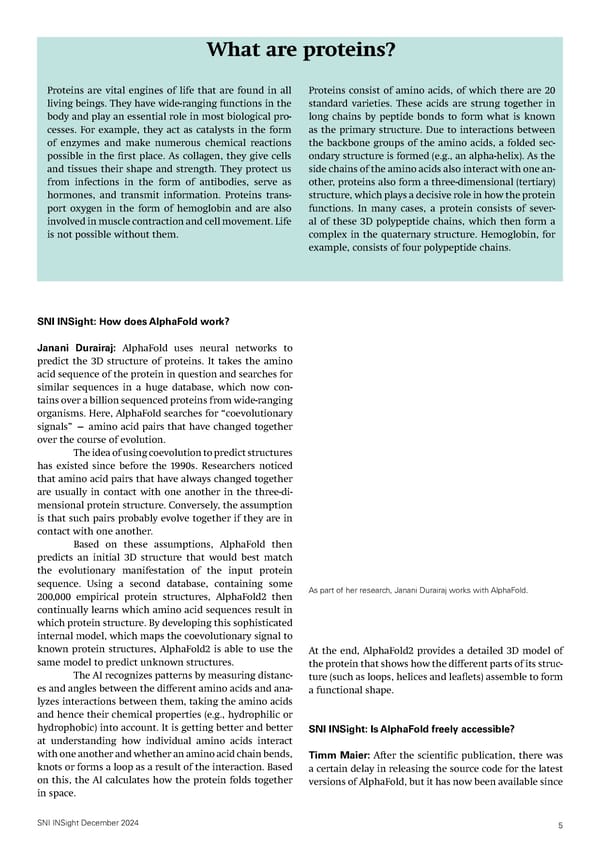What are proteins? Proteins are vital engines of life that are found in all Proteins consist of amino acids, of which there are 20 living beings. They have wide-ranging functions in the standard varieties. These acids are strung together in body and play an essential role in most biological pro- long chains by peptide bonds to form what is known cesses. For example, they act as catalysts in the form as the primary structure. Due to interactions between of enzymes and make numerous chemical reactions the backbone groups of the amino acids, a folded sec- possible in the 昀椀rst place. As collagen, they give cells ondary structure is formed (e.g., an alpha-helix). As the and tissues their shape and strength. They protect us side chains of the amino acids also interact with one an- from infections in the form of antibodies, serve as other, proteins also form a three-dimensional (tertiary) hormones, and transmit information. Proteins trans- structure, which plays a decisive role in how the protein port oxygen in the form of hemoglobin and are also functions. In many cases, a protein consists of sever- involved in muscle contraction and cell movement. Life al of these 3D polypeptide chains, which then form a is not possible without them. complex in the quaternary structure. Hemoglobin, for example, consists of four polypeptide chains. SNI INSight: How does AlphaFold work? Janani Durairaj: AlphaFold uses neural networks to predict the 3D structure of proteins. It takes the amino acid sequence of the protein in question and searches for similar sequences in a huge database, which now con- tains over a billion sequenced proteins from wide-ranging organisms. Here, AlphaFold searches for “coevolutionary signals” — amino acid pairs that have changed together over the course of evolution. The idea of using coevolution to predict structures has existed since before the 1990s. Researchers noticed that amino acid pairs that have always changed together are usually in contact with one another in the three-di- mensional protein structure. Conversely, the assumption is that such pairs probably evolve together if they are in contact with one another. Based on these assumptions, AlphaFold then predicts an initial 3D structure that would best match the evolutionary manifestation of the input protein sequence. Using a second database, containing some As part of her research, Janani Durairaj works with AlphaFold. 200,000 empirical protein structures, AlphaFold2 then continually learns which amino acid sequences result in which protein structure. By developing this sophisticated internal model, which maps the coevolutionary signal to known protein structures, AlphaFold2 is able to use the At the end, AlphaFold2 provides a detailed 3D model of same model to predict unknown structures. the protein that shows how the di昀昀erent parts of its struc- The AI recognizes patterns by measuring distanc- ture (such as loops, helices and lea昀氀ets) assemble to form es and angles between the di昀昀erent amino acids and ana- a functional shape. lyzes interactions between them, taking the amino acids and hence their chemical properties (e.g., hydrophilic or hydrophobic) into account. It is getting better and better SNI INSight: Is AlphaFold freely accessible? at understanding how individual amino acids interact with one another and whether an amino acid chain bends, Timm Maier: After the scienti昀椀c publication, there was knots or forms a loop as a result of the interaction. Based a certain delay in releasing the source code for the latest on this, the AI calculates how the protein folds together versions of AlphaFold, but it has now been available since in space. SNI INSight December 2024 5
 SNI INSight December 2024 Page 4 Page 6
SNI INSight December 2024 Page 4 Page 6